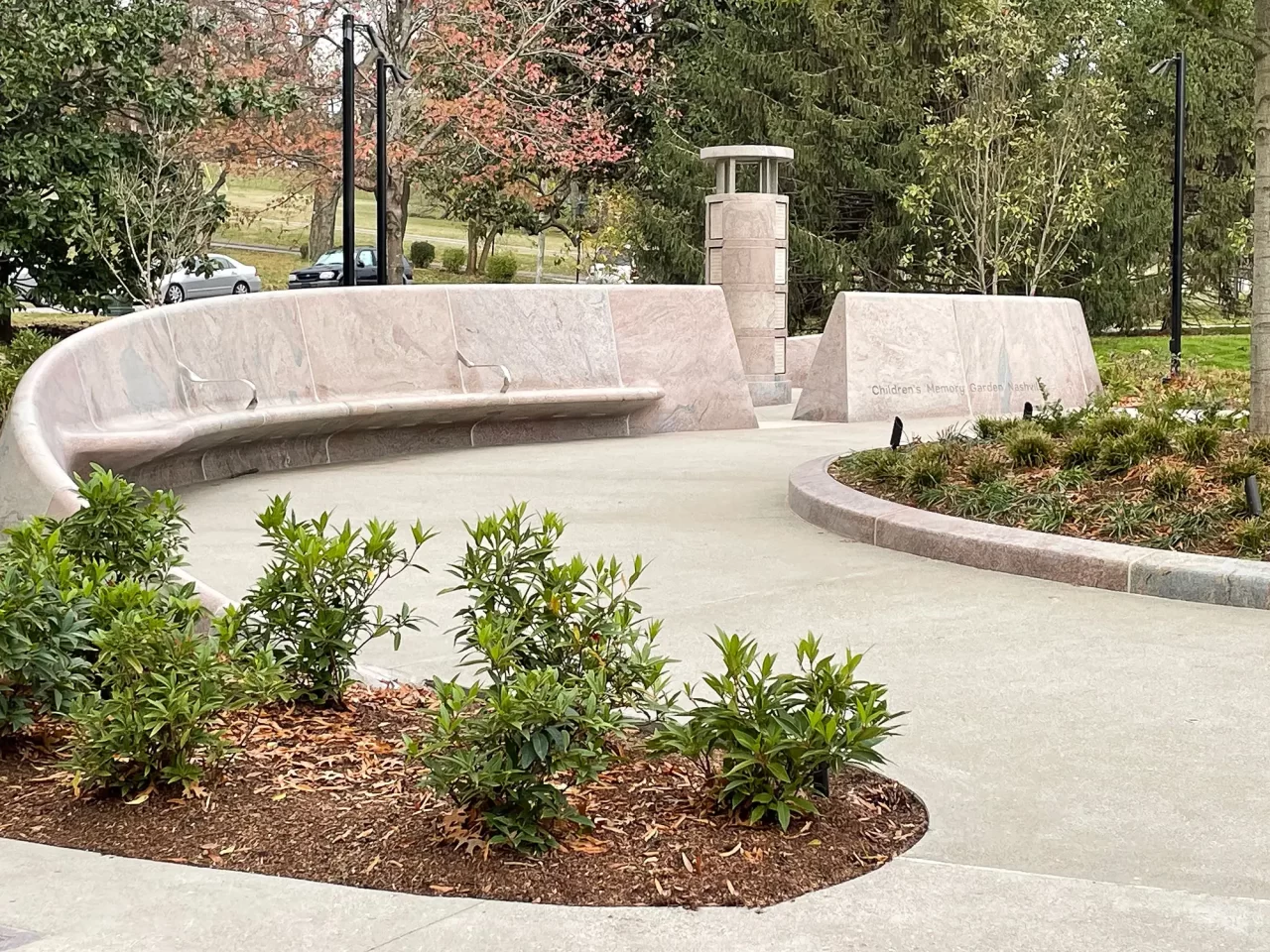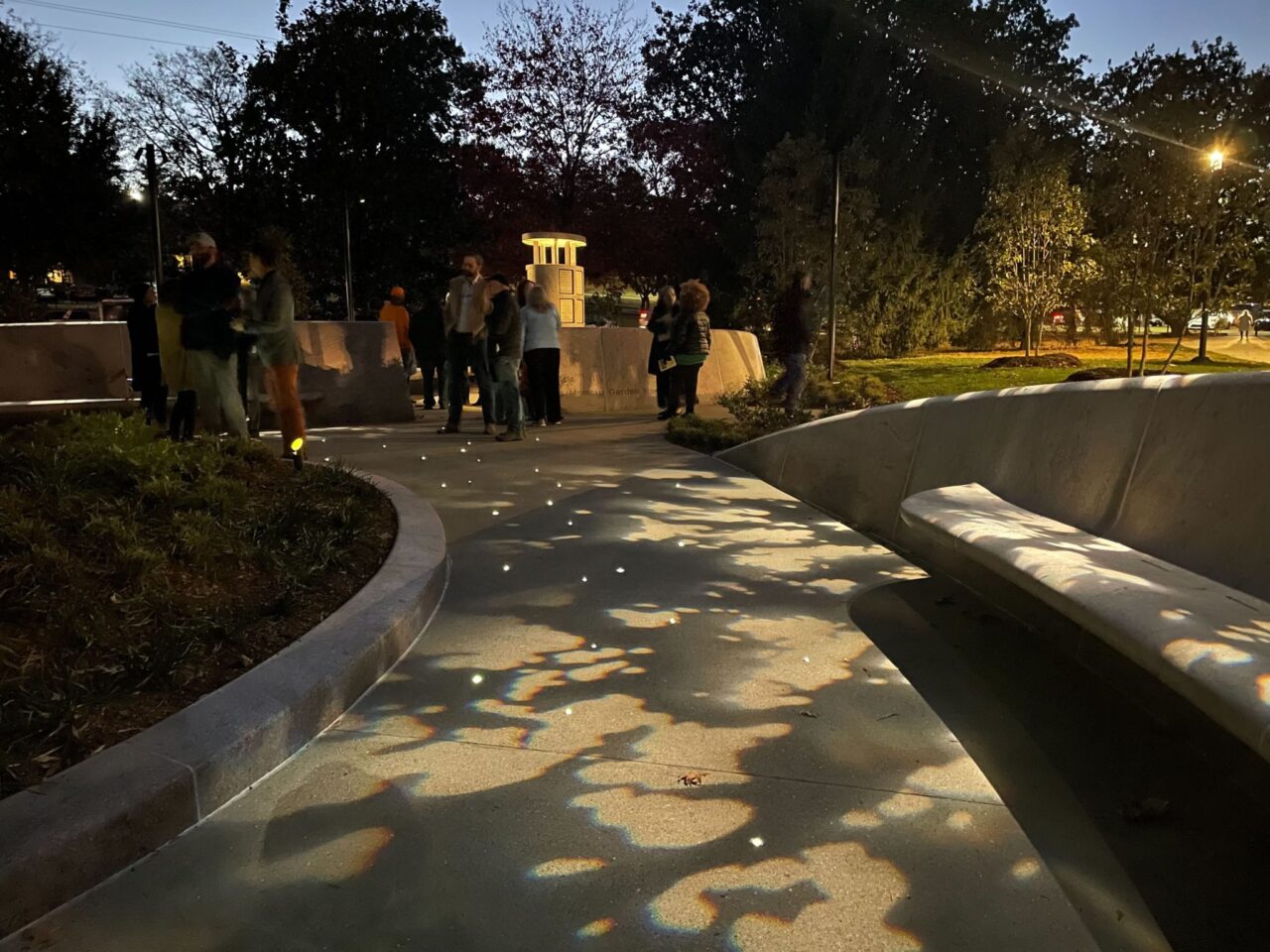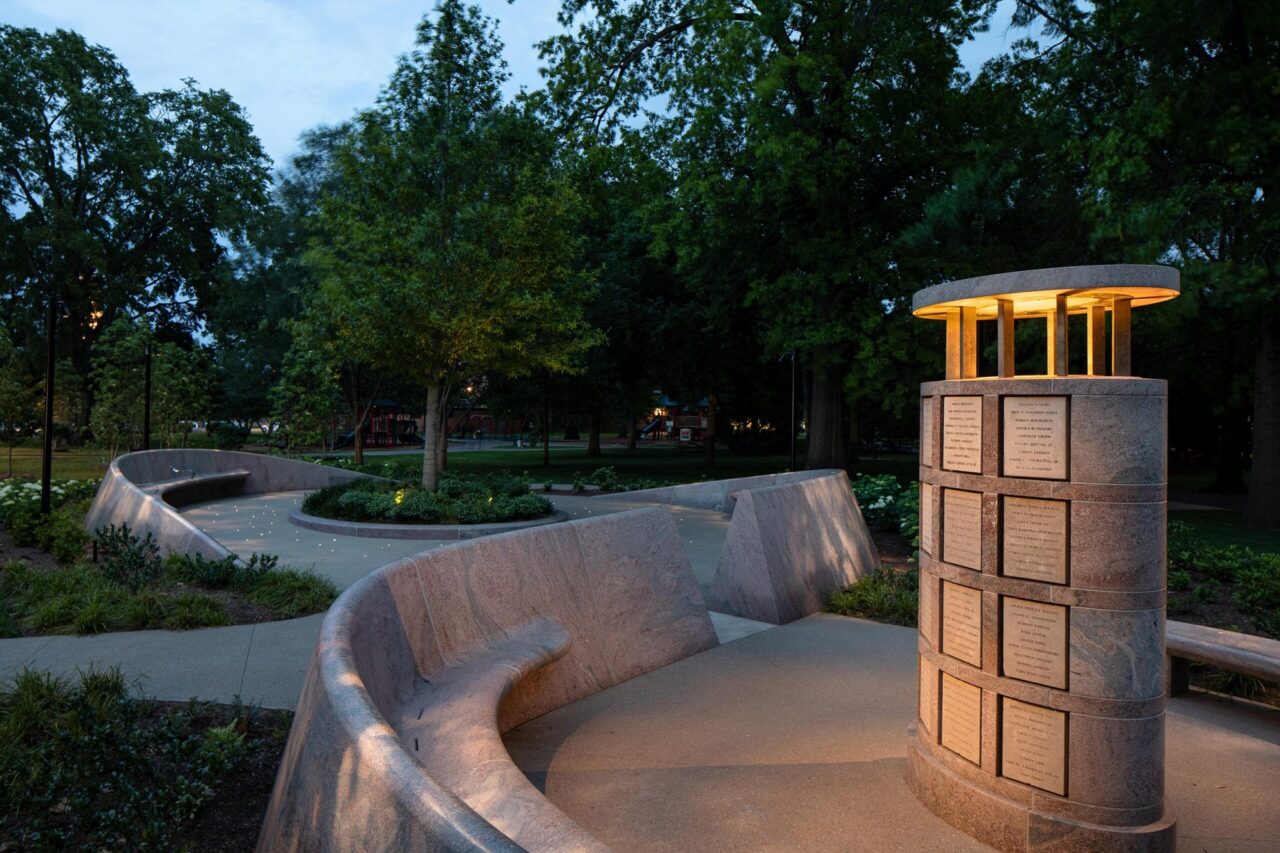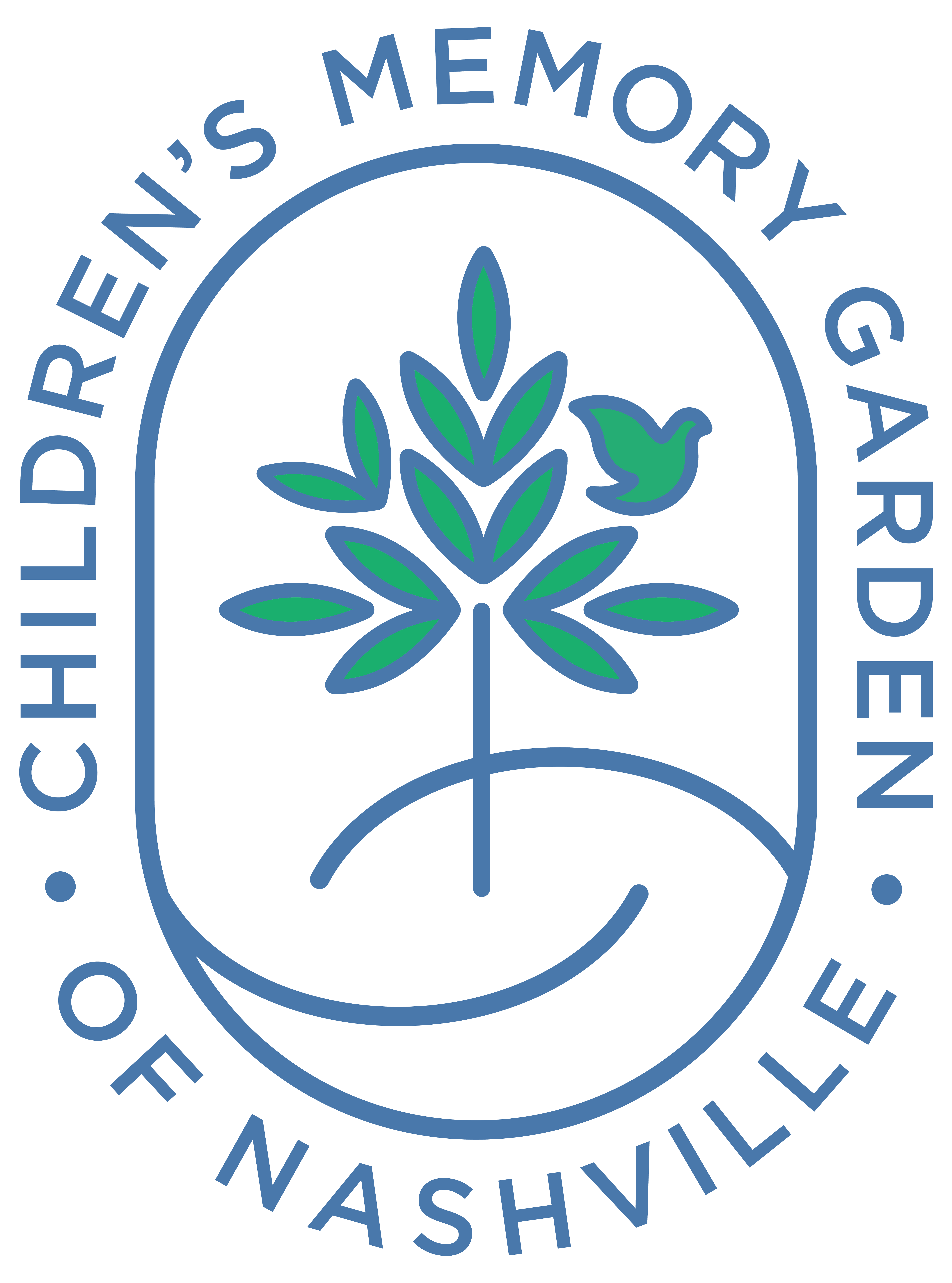Garden Design and Information
Garden Design by Nelson Byrd Woltz Landscape Architects, Charlottesville, VA
Design Team included Thomas Woltz, Joey Hays, Collier Engineering, Metro Parks, Tillett Lighting
“The Garden is designed to create a contemplative, calm atmosphere for remembering those we loved.”
Design Team included Thomas Woltz, Joey Hays, Collier Engineering, Metro Parks, Tillett Lighting
“The Garden is designed to create a contemplative, calm atmosphere for remembering those we loved.”
GRANITE BENCHES
- Represents two hands held tightly together to signify the bond of family & comfort of human compassion.
- Benches emerge from and descend into the ground to symbolize the cycle of life.
- The reak in the long “S” curved bench represents a life interrupted and divides the memorial into two areas for reflection, meditation, and remembrance.
WILLOW OAK TREES (Quercus phellos)
- The large, mature Willow Oak adjacent to the site represents the parent, and the younger Willow Oak in the Children’s Memory Garden circle represents the child.
- Randall Lantz of Metro Parks conducted a thorough search for a young, thriving Willow Oak and guided the transplant of the young tree into the Garden.
PLANTS UNDER THE WILLOW OAK MEMORY TREE
- Plantings under the Willow Oak Memory Tree will have soft and comforting textures, flowering plants in spring and summer, and an evergreen presence in winter.
PAVEMENT SURROUNDING THE WILLOW OAK MEMORY TREE
- The pavement is dappled with Points of Light, designed by Linnaea Tillett Lighting Design Associates.
- The lights were arranged using a pattern found in nature and in the design of sacred spaces. Twinkling like stars, the lights honor the sacredness of each child.
LIGHTHOUSE MONUMENT
- The lighthouse holds the limestone plaques from the original Garden, which were made by Charlie Hunt of Hunt Memorials. The plaques embody the strong grassroots history of the original Children’s Garden, which was founded in 1996.
- The lighthouse’s open top allows light to spill outward, making it a beacon at night. The Lighthouse is a symbol, shining light on children lost to violence.
- The Founder’s Plaque on the Lighthouse honors Kelby Smith, the 6-year-old boy who wanted to help parents feel better, Kelby’s father Ron Smith, who suggested the Children’s Garden to Metro Mayor Phil Bredesen and Metro Parks. Original Children’s Memory Garden was established in Centennial Park in 1996.



